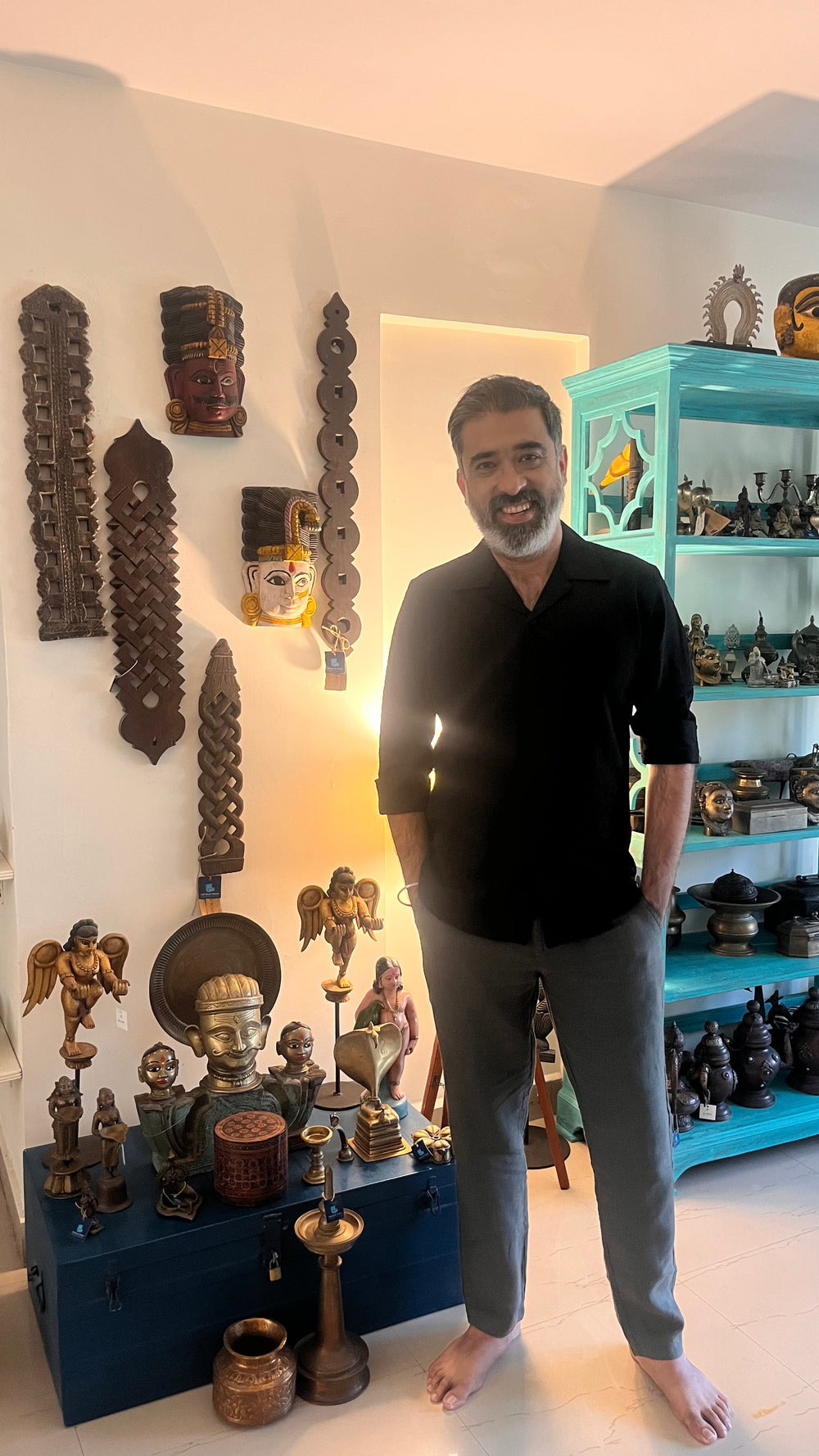Vintage Brass Swami Dattatreya
This vintage collectible is a statuette of Lord Dattatreya who is believed to be an avatar of the three Hindu gods Brahma, Vishnu and Shiva. He is shown with six hands; the lowest two hands carry rosary (mala) and water pot (kamandalu), middle pair of hands hold hourglass mini-drum (damaru) and trident (trishul), and top two hands have conch (shankh) and spinning wheel (chakra).
History of use of statues of gods in Indian religious culture: The history of statues in Indian religious culture spans over two millennia, showcasing diverse styles. The Mauryan era saw the emergence of stone-carved statues, marked by a certain austerity and simplicity. In subsequent centuries, during the Gupta period, sculptors honed their skills, producing lifelike, highly detailed statues. The Gupta style emphasized grace, idealized proportions, and exquisite facial expressions, exemplified by the iconic standing Buddha statues of Sarnath. As time progressed, regional variations emerged. In the South, the Chola dynasty excelled in bronze casting, creating dynamic, sensuous depictions of deities. In the North, the Rajput and Pala dynasties contributed distinctive styles, characterized by intricate ornamentation and unique iconographic features. The Mughal era brought about a synthesis of Persian and Indian artistic traditions, exemplified by the elegant marble reliefs and intricately carved jalis (latticed screens) in Mughal architecture.
Sourced From:Maharashtra
Dimensions: cm (Length), 5 cm (Breadth/Depth), 17 cm (Height)
Weight: 0.75 kg
Colour: Antique Golden
Wipe the piece with a soft, dry cloth. Do not expose it to direct sunlight, dampness, heat or cold.
Shipping is free in India upto 5 kgs. Please refer to the “Payment, Shipping and Returns” before you place your order.











